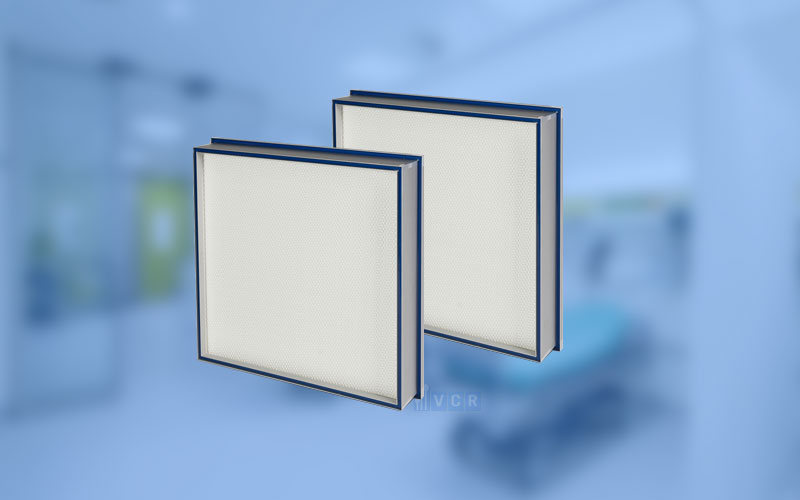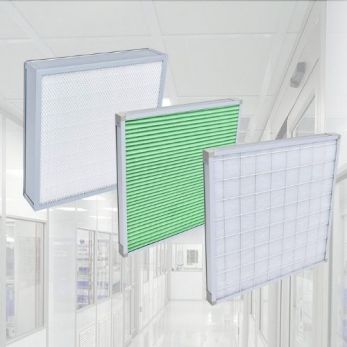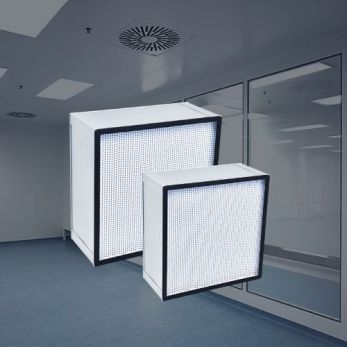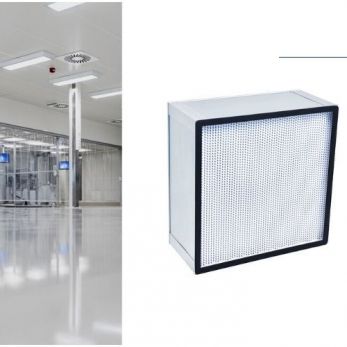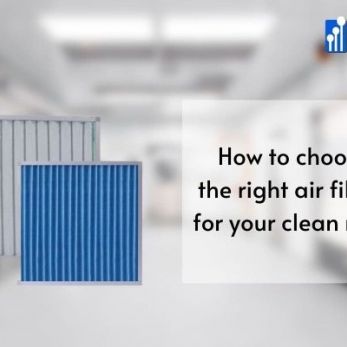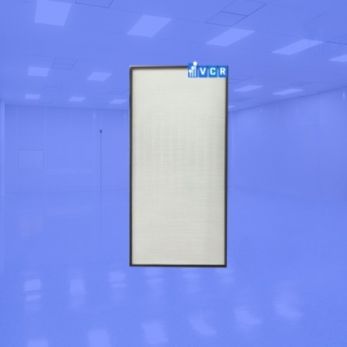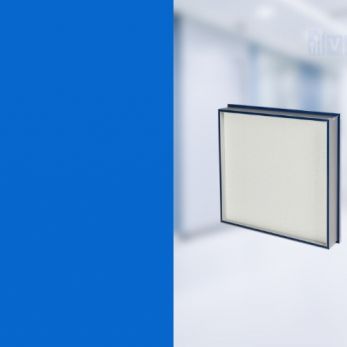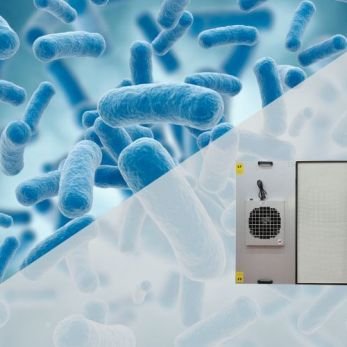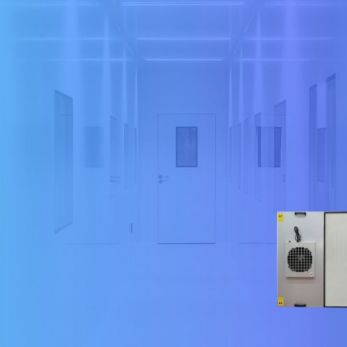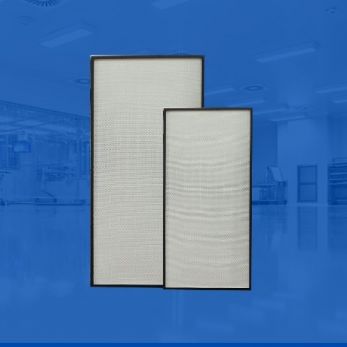What is HEPA filter? HEPA filter in daily life and cleanrooms
HEPA filter or High-Efficiency Particulate Air filter is a kind of filter that can theoretically remove 99.95% of dust, pollen, mold, bacteria, and any airborne particles sized 0.3 microns or larger (µm). HEPA filter was first
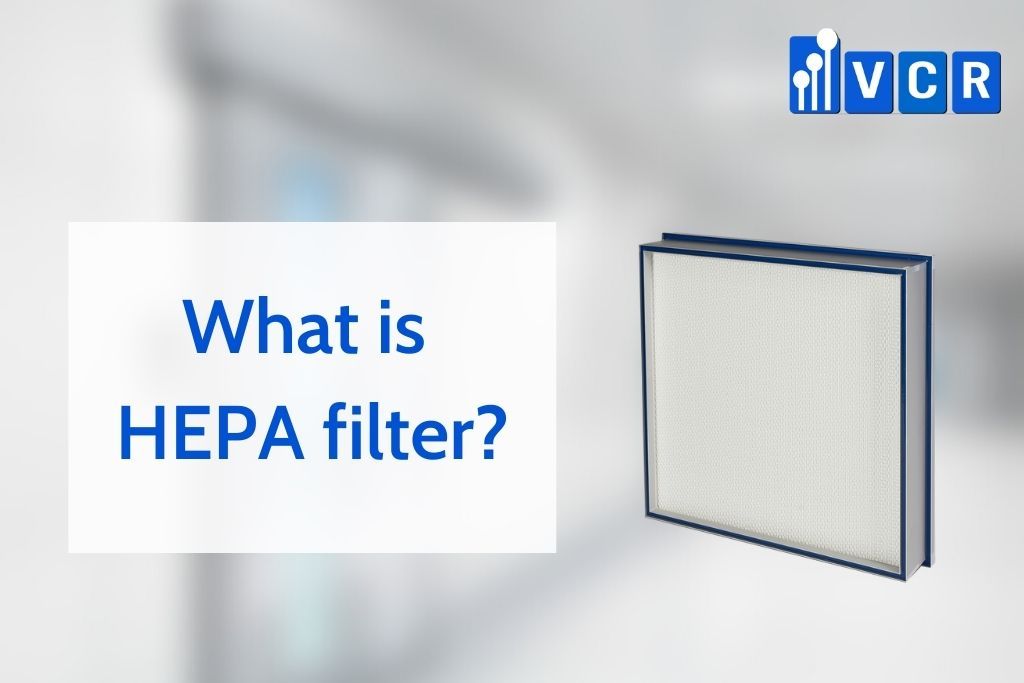
HEPA filter is becoming more and more popular in contamination control. It is applied in many industries such as electronics, pharmaceutical industries, and even home appliances. What is HEPA filter, how many types of HEPA and how does it work? Let's find out in this article.
1. What is HEPA filter?
HEPA filter or High-Efficiency Particulate Air filter is a kind of filter that can theoretically remove 99.95% of dust, pollen, mold, bacteria, and any airborne particles sized 0.3 microns or larger (µm).
HEPA filter was first designed in the 1940s and used in Manhattan Project to capture airborne radioactive contaminants. A decade later, HEPA filters were introduced commercially. From then on, HEPA filter has gained more and more popularity in industries and in household appliances.
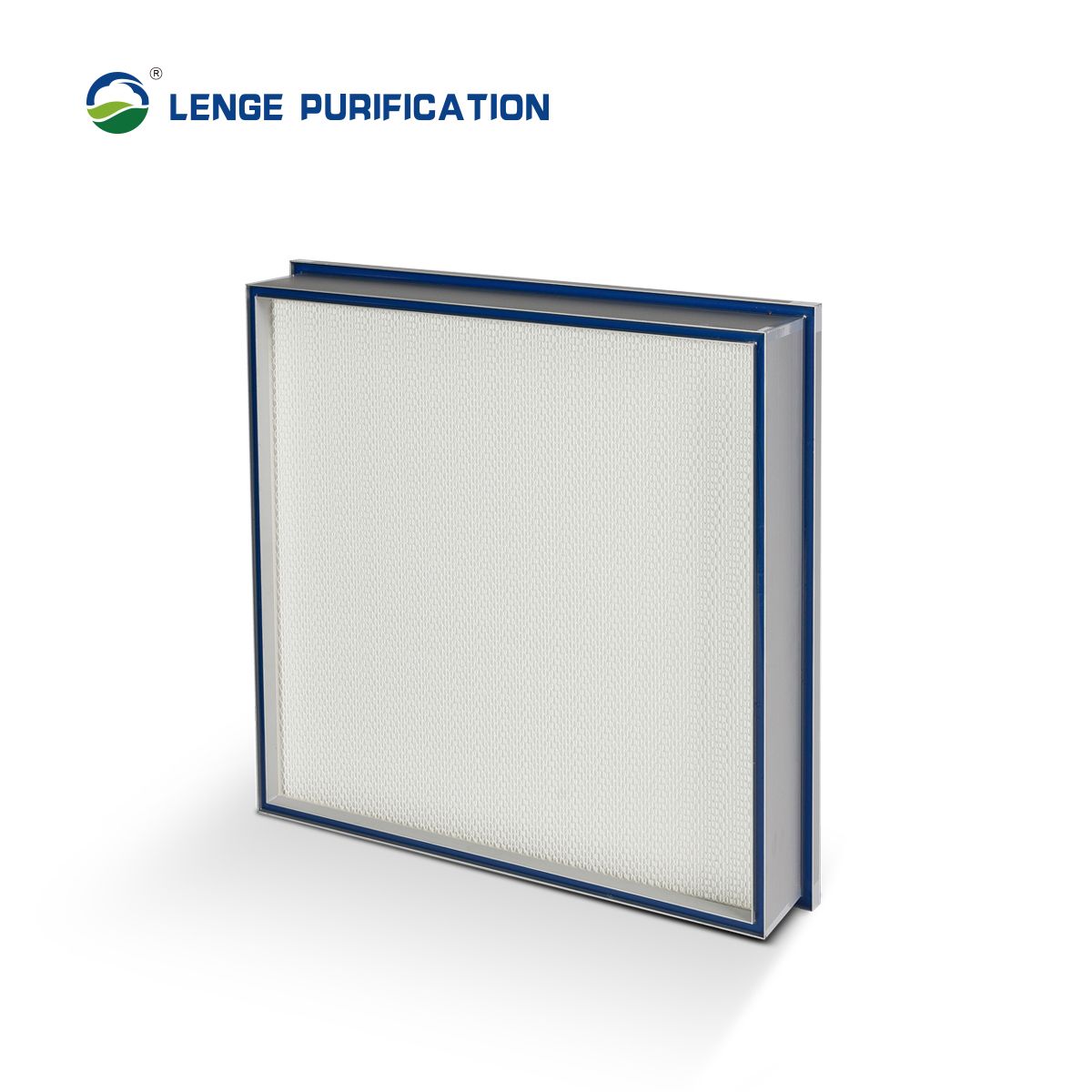
In recent years, HEPA filters have been added to household products such as air purifiers for families. HEPA filters can remove almost all pollen, fungal spores, pet hair, and smoke, which can cause respiratory diseases such as asthma and allergies.
Even fine dust particles of PM 2.5 that are less than 2.5 μm in size, which have been talked about a lot in recent years in air pollution, can be removed by HEPA filters up to 99.9%. Therefore, harmful substances in the air that seriously affect human health, especially the elderly and children, will be completely removed.
2. HEPA filters classification
According to European standards, there are 17 classes of filters.
The higher the class, the greater the efficiency.
Classes E10 to E12 are Efficient Particulate Air filters (EPA), H13 and H14 are High-Efficiency Particulate Air filters (HEPA), and U15 to U17 are Ultra Low Penetration Air filters (ULPA).
These air filter classes are covered by the European standard EN 1822, which assesses the filtration performance of the filter for the MPPS (Most penetrating particle size).
EPA filters
EPA filters, which stand for Efficient Particulate Air Filter, have three levels of filtration and are capable of filtering about 99.5% of dust particles.
- E10 filters can capture 85% of dust in the environment.
- E11 filters can capture 95% of dust in the environment.
- E12 filters can capture 99.5% of dust in the environment.
HEPA filters
HEPA filters, which stand for High-Efficiency Particulate Air, have two levels of filtration and are capable of filtering up to 99.995%.
- H13 filters can capture 99.95% of airborne particles.
- H14 filters can capture 99.995% of airborne particles.
ULPA filters
ULPA filters, which stands for Ultra Low Penetration Air Filter, also known as ultra HEPA filter, are capable of filtering up to 99.999995% of various pollutants, including pollen, cigarette smoke, dust, and other particles with a size of 0.3 micrometers or less. ULPA filters have three levels of filtration:
- U15 ultra HEPA filters can capture 99.9995% of airborne particles.
- U16 ultra HEPA filters can capture 99.99995% of airborne particles.
- U17 ultra HEPA filters can capture 99.999995% of airborne particles.
3. HEPA filters specification
According to the European Community standard EN 1822-1:2009, there are 2 types of HEPA filters: HEPA filter H13 and HEPA filter H14.
Below is the specification table for HEPA filters:
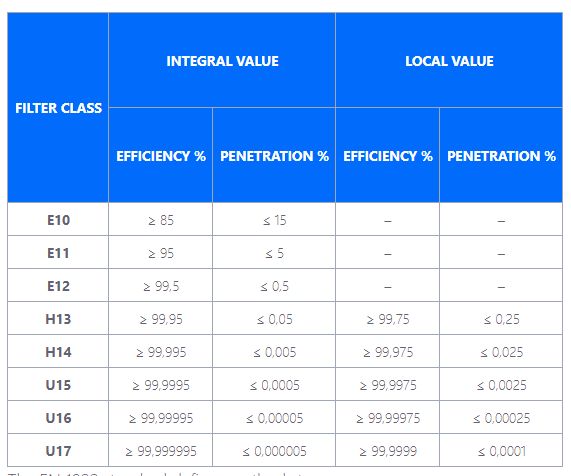
Image: HEPA filter specification
HEPA filter H13 has a filtration efficiency of up to 99.95%, while HEPA filter H14 could filter 99.995% of particles.
4. HEPA filter working principle
Most HEPA filters are composed of interlaced fiberglass fiber that is twisted and turned in countless directions to create a fibrous maze.
For particles greater than 0.3 μm in size, they can’t get through. Large particles move in a straight path and collide with the filter fiber due to inertia.
For smaller particles, they could go through the hole, but they collide with one another and move randomly. As a result, they hit and stick to the filter fibers. This is what’s called the Brownian movement.
The way HEPA filter works is quite simple. The air is passed through the filter that traps pollutants through pressure. After passing through the filter, the dirty particles are held at the filter's entrance.
This process is repeated continuously, and the device will capture all the dirty particles in the air and prevent them from returning.
Even ultra-fine dust particles as small as 0.3 microns (µm) are captured by HEPA filters. Dangerous ultra-fine dust particles such as PM2.5 (symbolized by 2.5 µm) are also trapped by HEPA filter.
Read more: Clean room filter: Amazing things you don't know about
5. HEPA filter applications
HEPA filters are used in a wide variety of applications such as electronics, aerospace, computer, nuclear power, and pharmaceutical industries. Hospitals, laboratories, and even homes are also in need of high-efficiency air filters.
HEPA filter in cleanroom
HEPA filters are widely used in cleanrooms, lab and factory settings because they create clean and filtered air - the key protection to products and personnel in cleanrooms, etc.
These filters can be found in cleanroom equipment like fan filter unit (FFU), HEPA box, dynamic pass box, air shower, blower filter unit (BFU), dispensing booth, biosafety cabinets, etc.
- Fan filter unit
Fan filter unit (FFU) is also known as a HEPA filter unit or HEPA fan filter unit. FFUs are used to provide unidirectional airflow from ceilings (HEPA filter units are usually hung on the cleanroom ceiling). The clean air created by the HEPA filter unit maintains positive pressure and supplies fresh, clean air for the production process and employees. These fan filter units use HEPA filters to remove 99.99% of the particles larger than 0.3µm.
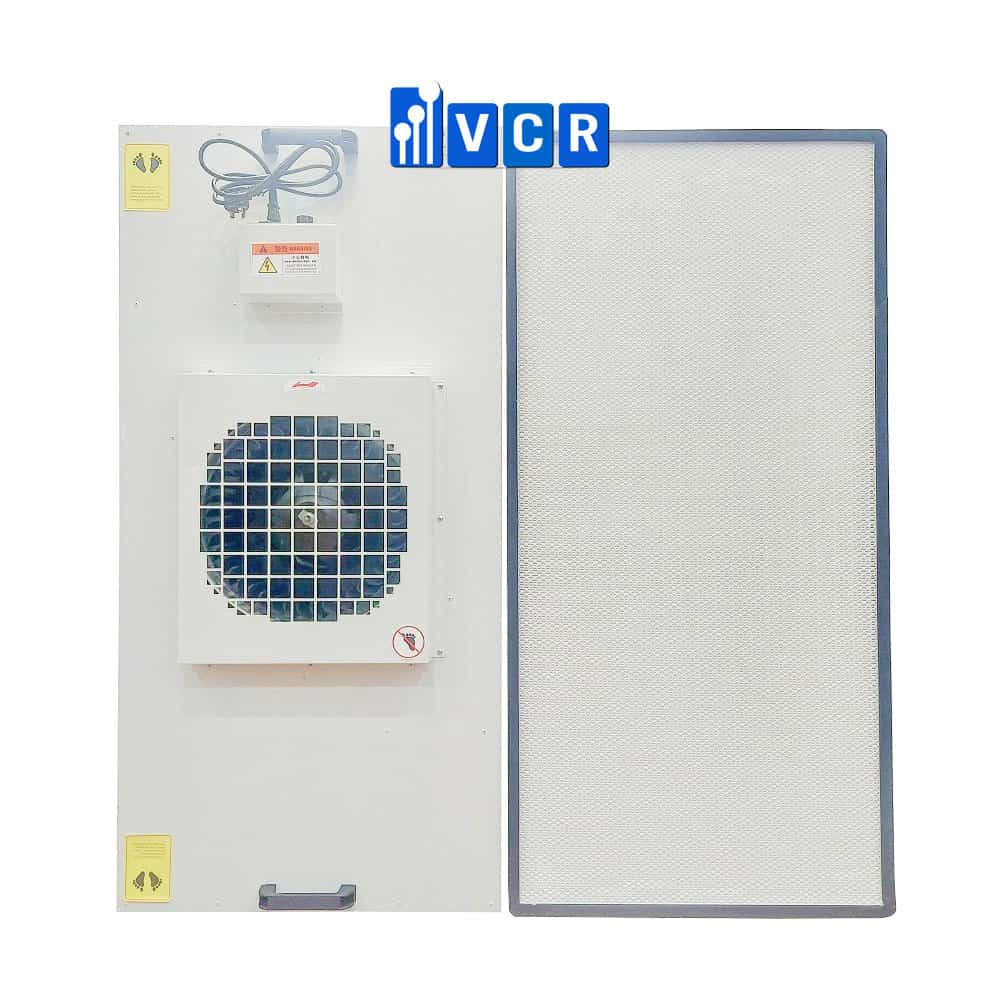
- Dispensing booth (weighing booth)
Dispensing booth is purifying equipment used to sample, weigh and analyze materials. Dispensing booths use HEPA filters to provide a laminar airflow, thereby providing a safe and clean working environment, and preventing the employees from powder contamination.
Dispensing booths are mostly used in pharmaceutical, chemical and vaccine cleanrooms.
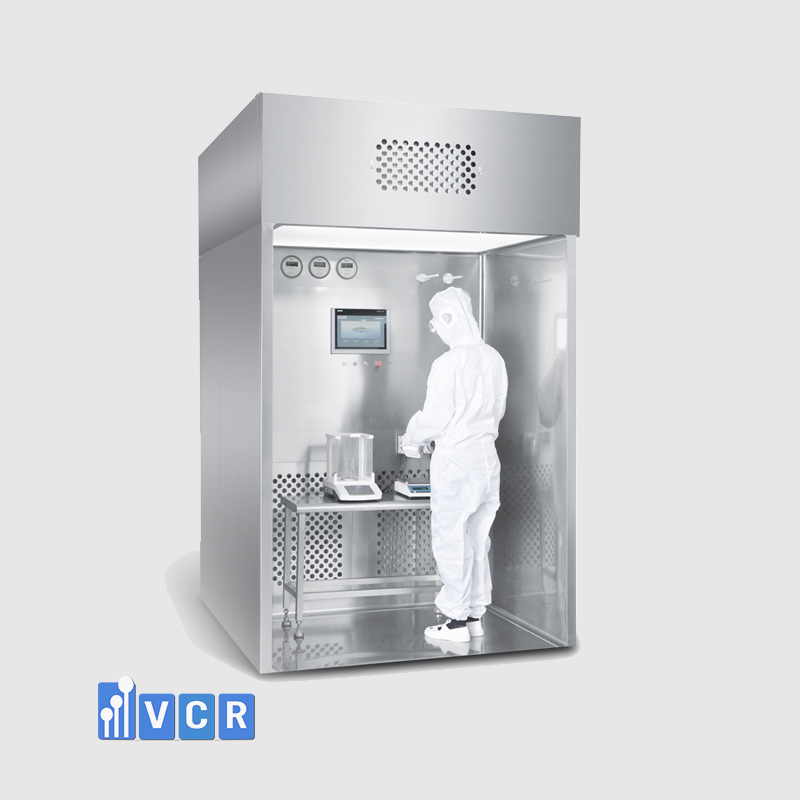
- AHU (Air handling unit)
AHU is short for Air Handling Unit, a device used to process air commonly used in the HVAC (Heating, Ventilation, and Air Conditioning) systems of factories, buildings, clean rooms, etc. AHUs use HEPA filters for clean rooms that require higher levels of cleanliness, filtering out particles smaller than 0.3 micrometers.
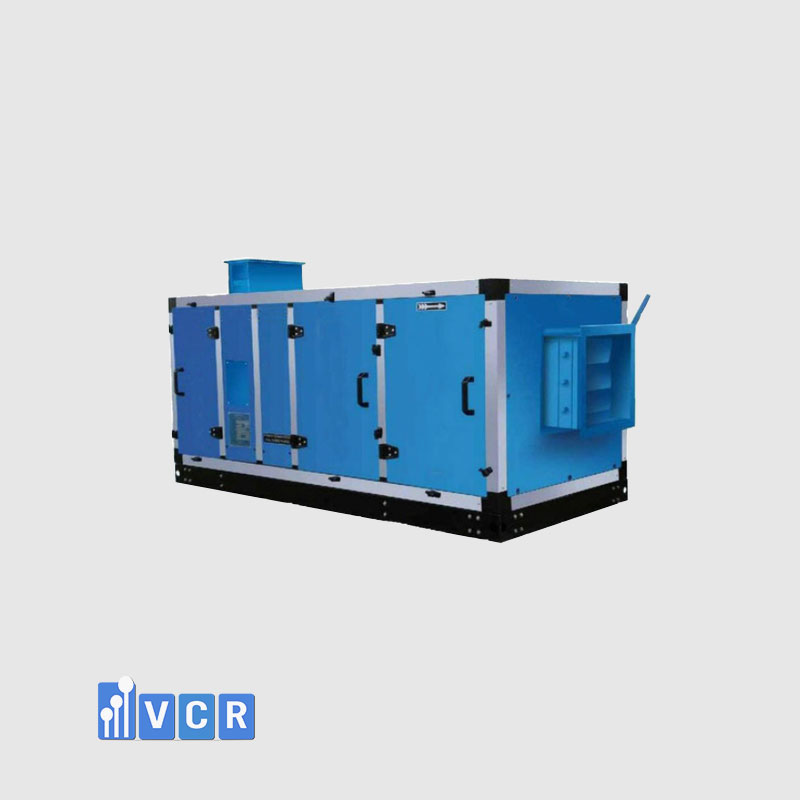
HEPA filter in household appliances
Air pollution has caused many health problems. In this case, the HEPA filter might capture a range of allergens, dust, and mold. Therefore, manufacturers of consumer products also add HEPA filters to home appliances: the HVAC system, portable air purifiers, and vacuum cleaners.
- Air purifiers
HEPA filters in air purifiers are designed to remove dust particles and pollutants from the air, as small as 0.3 micrometers (approximately the diameter of 0.0025 of a human hair), with an efficiency of up to 99.97%. In addition to removing pollutants, HEPA filters in air purifiers also keep them trapped, resulting in a cleaner, healthier living environment.

- Air conditioners
Some air conditioning systems are now equipped with HEPA air filters to keep the indoor air clean and free of disease-causing bacteria. The filtration system in air conditioners has 1 to 3 filters that capture dirt, odors from household items, and mold. In addition to dust particles, many bacteria and viruses also exist in environments that are becoming increasingly polluted. The goal is to create a green and clean environment, at least within each individual's home.
The HEPA membrane is located in the third filter membrane and has the ability to fight against viruses and harmful diseases, including the A/H1N1 flu virus. The third filter membrane includes a bactericidal solution, a fabric filter, a net filter, and a HEPA filter that can kill the A/H1N1 virus after just 10 minutes of operation.
- Dehumidifiers
Some dehumidifiers are now equipped with HEPA filters from the US. This is one of the modern air filtration technologies that are commonly used in air purifiers today.
HEPA in dehumidifiers can filter the air with high efficiency. The HEPA filter is made up of a mesh of glass fibers arranged randomly with an extremely small diameter of only 0.5 and 0.2 micrometers. Therefore, it can capture a large amount of dust, bacteria with a diameter larger than 0.2 micrometers, which can cause asthma and respiratory allergies, that cannot be seen with the naked eye.
- Cooling fans
Similarly to other products, some cooling fans on the market are now equipped with HEPA filters to improve air filtration.
- Humidifiers
The quality of air is significantly improved when a humidifier is equipped with a HEPA filter, which can capture a considerable amount of dust, reducing allergens such as large dust particles and pet hair that are dispersed in the air. Users should regularly clean the filter to ensure the fan operates effectively.
- Vacuum cleaners
Vacuum cleaners use HEPA filters to capture small particles of dust, allergens, and other pollutants that can cause respiratory problems.
6. When to replace HEPA filter?
HEPA filters have a certain life span, whether they are used in fan filter units or at any other place. It has exceeded the initial pressure drop rate of 100Pa, or equal to 2 times higher than operating initial pressure drop (3 times higher for low resistance and sub-high efficiency) in more than 1 year. The HEPA filter should be replaced if it exceeds the standard.
Read more: Pressure drop in air filtration






